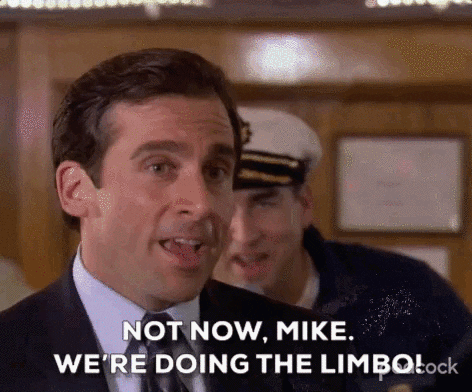Time is running out to secure your seat for our live New Manager Bootcamp. In just one week, you’ll be prepared to approach this new position armed with the tools and knowledge you need to excel and become an incredible manager. Sign up here.
In today’s edition:
 Flexy time Flexy time
 Balancing act Balancing act
—Sam Blum
|
|
The Office/NBC via Giphy
Three years ago, the pandemic shattered many corporate workplace norms that had been in place for decades. Now, as much of society settles into a post-pandemic equilibrium, one major facet of the pre-Covid landscape is still shrouded in uncertainty: the office.
Some companies have made attendance mandatory, whereas others have offered flexibility. At certain major employers, such as Apple, high-profile disputes have erupted between employees and leadership over return-to-office (RTO) schemes. The game of carrots and sticks, coupled with enduring uncertainty about what utility offices serve, has left the workforce in a permanent state of in-between, where companies don’t quite use offices like they used to, Dror Poleg, a future-of-work consultant, explained to HR Brew.
“There is no standard way of working. There’s just a lot of different companies and a lot of teams within companies adopting whatever works [for them],” he said.
While navigating the complexities of RTO limbo may seem daunting, Poleg advises organizations to avoid implementing blanket policies and instead conduct individual assessments on a team-by-team basis. With the increasing prominence of different flexible work styles, employers now have more options than ever. “The decision here is not to pick whether you’re going full in person or full remote, but really to pick what structure you are going to embrace,” he said.
Keep reading.—SB
|
|
Morning Brew informs, educates, and connects with an engaged audience of 22m+ people monthly. That’s a lottt of viz—especially considering that 92% of ’em engage with Morning Brew on a daily basis, compared to only 15% with other competitive publications.
Wanna tap into our unique community of young, hard-to-reach readers (who, btw, are 1.7x more likely to have a household income of $150k+)?
Morning Brew connects brands to our audience through information and inspiration, using our voice to tell your story in our ever-growing newsletters, booming multimedia content, popular events, and so much more.
Our content is smart, never boring, and easy to access, and our audience trusts us to deliver what they need in a way that feels authentic. Picture your brand woven into all that potential. Sound exciting? We think so too.
Work with us.
|
|
Simone Stolzoff
White-collar professionals in the US often suffer from a malady: a tendency to derive personal meaning and fulfillment from their careers. This is, distilled simply, the premise of Simone Stolzoff’s new book: The Good Enough Job: Reclaiming Life From Work. In it, Stolzoff provides a wide-angle lens into the many causes of this phenomenon, colored by interviews with workers, and presents actionable steps that organizations can take to prevent employees from treading this path.
HR Brew spoke to Stolzoff about the pervasiveness of careerism in US society, why it became so entrenched, and some of the steps employers can take to loosen its grip on modern life.
This interview has been edited for length and clarity.
Why did you decide to write this book?
Two reasons: I’m a journalist and I’ve been on the work beat for a number of years. Part of it is just born out of my reporting and observing how essential work has become for so many Americans. I covered Silicon Valley tech companies, and there was this real ethos in the early aughts about being the perfect employer and trying to create decent jobs for people. The other reason was more personal. In 2018, I ended up leaving [full-time] journalism, and it was sort of a swerve in my career. It felt like a crossroads and these two potential paths, and very much felt like I was choosing, not between two jobs, but between two versions of me. So the central question of the book is, how did work become central to our identities?
Why is this culture so pervasive? Keep reading.—SB
|
|
Francis Scialabba
Today’s top HR reads.
Stat: 44% of people in tech laid off between October 2022 and March 2023 were women, though women only accounted for 33% of the worldwide tech workforce in 2022. (This Is Money)
Quote: “When are these kids going to have time to study, in their sleep?”—Ivette Muhammad, COO of human development nonprofit Creative Visions, speaking out in opposition to Iowa’s relaxed child labor laws (the Des Moines Register)
Read: ChatGPT is bound to replace some jobs, but it and other generative AI tech will also enhance and supplement others, freeing employees from redundant work to focus on strategy, innovation, and creativity. (Forbes)
$2m+ in recruiting costs: That’s how much GM saved last year—in less than 6 months—with the help of Paradox. See how conversational recruiting software pulled it off in this free webinar.*
*This is sponsored advertising content.
|
|
|





